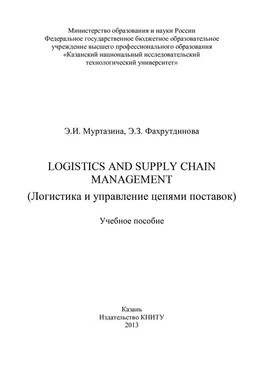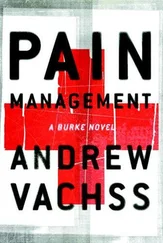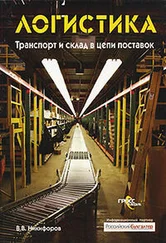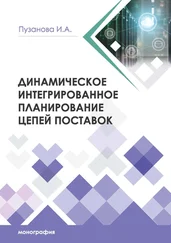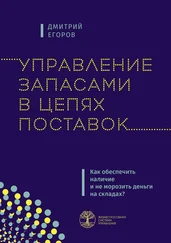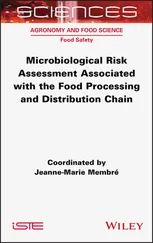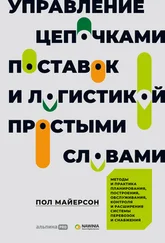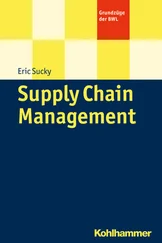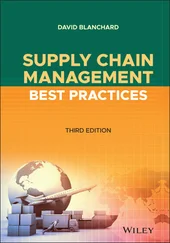Муртазина Э. И., Фахрутдинова Э. З.
Logistics and Supply Chain Management (Логистика и управление цепями поставок)
Основная цель пособия – помощь обучающимся в овладении на базе специальных текстов лексическим и грамматическим материалом (лексическими и грамматическими шаблонами), связанным со спецификой и основными областями логистики, такими как логистика снабжения, производственная, транспортная, складская, распределительная логистика; с международными терминами логистики, международными правилами по толкованию наиболее широко используемых торговых терминов в области внешней торговли – Инкотермс; в ознакомлении с коммерческими, транспортными, финансовыми и таможенными документами.
Учебное пособие состоит из двух разделов: базового курса, который содержит практическую (предтекстовые и послетекстовые лексико-грамматические задания, упражнения на перевод с русского на английский, с английского на русский, коммуникативные упражнения) и теоретическую части (грамматический справочник), и сборника дополнительных текстов и заданий для самостоятельной работы студентов.
Базовый курс состоит из 12 уроков (Units), каждый из которых включает в себя оригинальные англоязычные тексты из газет, журналов и докладов, предтекстовые и послетекстовые упражнения.
Учебное пособие предназначено для занятий с бакалаврами 1-2 курсов по направлению 080200.62 «Менеджмент», профиль подготовки «Логистика», по дисциплине «Иностранный язык», а также может быть использовано в группах бакалавров, магистров, аспирантов, а также при работе со студентами в группах с углубленным изучением английского языка.
UNIT 1
INTRODUCTION TO LOGISTICS
1 . Read the following international words. Define their meanings comparing them to the meanings of the corresponding Russian words:
concept, control, courier, deterioration, distribution, effective, formal, financial, geographical, information, integration, logistics, machine, material, organization, personnel, plan, positioning, practical, process, product, resource, service, strategy, system, transportation, uniform.
2 . Complete the following table using suitable forms:

3 . Translate English words and phrases in column A using Russian words and phrases from column B:

4 . Observe the words and phrases from the text “Logistics”:
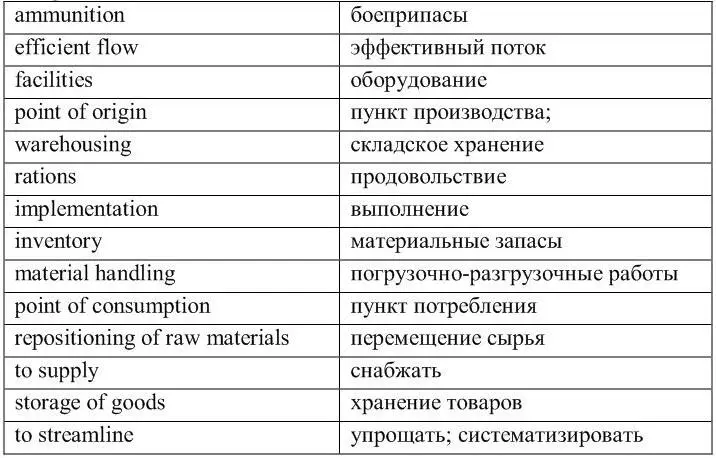
5 . Read and translate the text:
Logistics
Logistics is the management of the flow of goods, information and other resources between the point of origin and the point of consumption in order to meet the requirements of consumers. Logistics involves the integration of information, transportation, inventory, warehousing, material handling, and packaging, and occasionally security. Logistics is a channel of the supply chain which adds the value of time and place utility.
A professional working in the field of logistics management is called a logistician. Professional logisticians are often certified by professional associations. Some universities and academic institutions train students as logisticians, offering undergraduate and postgraduate programs. The main functions of a qualified logistician include inventory management, purchasing, transportation, warehousing, consultation and the organizing and planning of these activities. Logisticians combine a professional knowledge of each of these functions to coordinate resources in an organization.
The Oxford English Dictionary defines logistics as "the branch of military science having to do with procuring, maintaining and transporting materiel, personnel and facilities." Another dictionary definition is "the time-related positioning of resources." As such, logistics is commonly seen as a branch of engineering that creates "people systems" rather than "machine systems.
Logistics is considered to have originated in the military's need to supply themselves with arms, ammunition and rations as they moved from their base to a forward position. The term logistics comes from the Greek logos (λόγος), meaning "speech, reason, ratio, rationality, language, and phrase". In ancient Greek, Roman and Byzantine empires, military officers with the title Logistikas were responsible for financial and supply distribution matters.
Supply chain management in military logistics often deals with a number of variables 1 1 зд.параметры
in predicting cost, deterioration, consumption, and future demand. For instance, peacetime consumption of ammunition and fuel will be considerably less than wartime consumption of these items, whereas other classes of supply such as subsistence and clothing have a relatively consistent consumption rate regardless of war or peace. Troops will always require uniform and food. More troops will require equally more uniforms and food. History has shown that good logistical planning creates a lean and efficient fighting force. Lack thereof can lead to a clunky 2 2 зд. неэффектиный
, slow, and ill-equipped force with too much or too little supply. In history, some have attributed the defeat of the British in the American War of Independence and the defeat of the Axis in the African theatre of World War II to logistical failure.
Logistics as a business concept evolved in the 1950s due to the increasing complexity of supplying businesses with materials and shipping out products in an increasingly globalized supply chain, leading to a call for experts called supply chain logisticians. Business logistics can be defined as "having the right item in the right quantity at the right time at the right place for the right price in the right condition to the right customer", and is the science of process and incorporates all industry sectors.
The term production logistics is used to describe logistic processes within an industry. The purpose of production logistics is to ensure that each machine and workstation is being fed with the right product in the right quantity and quality at the right time. The concern is not the transportation itself, but to streamline and control the flow through valueadding processes and eliminate non–value-adding ones. Today the complexity of production logistics can be modeled, analyzed, visualized and optimized by plant simulation software.
Читать дальше
Конец ознакомительного отрывка
Купить книгу
